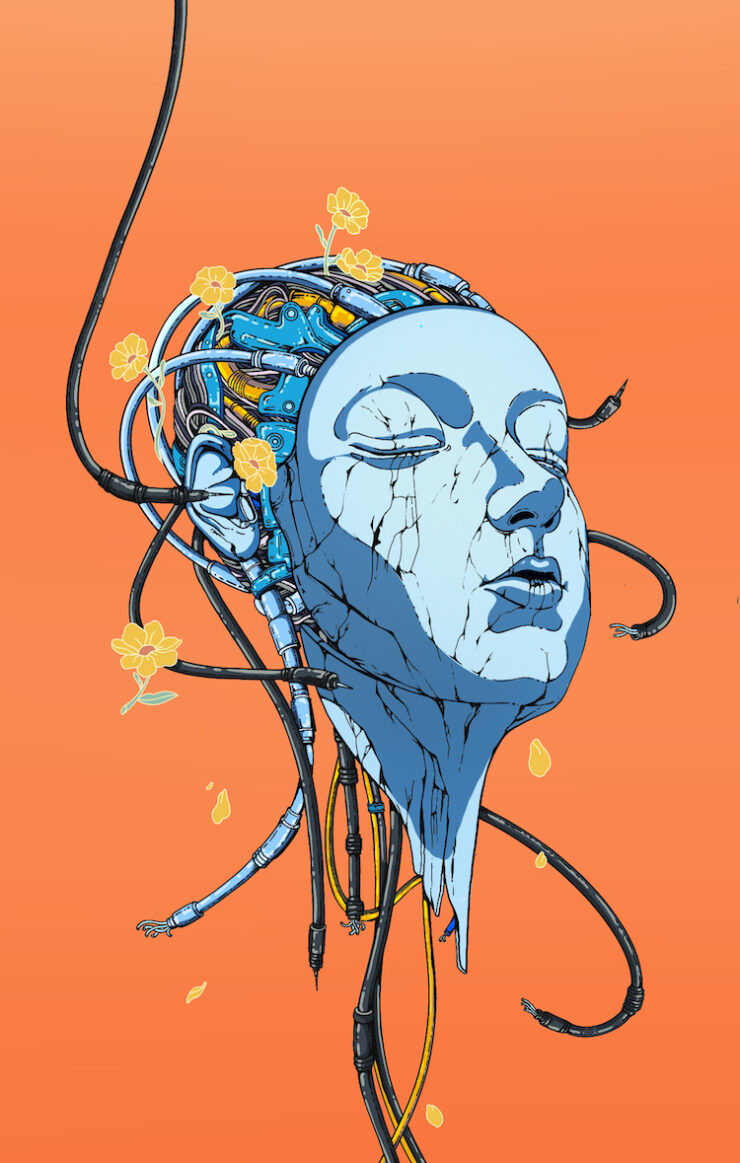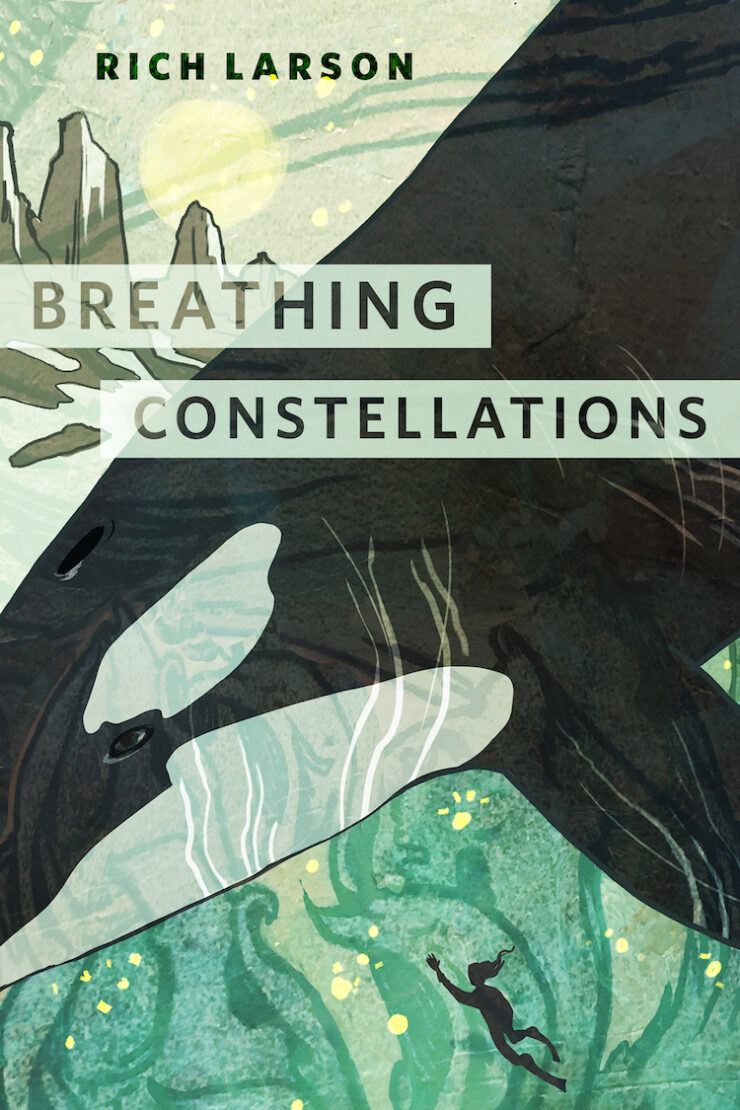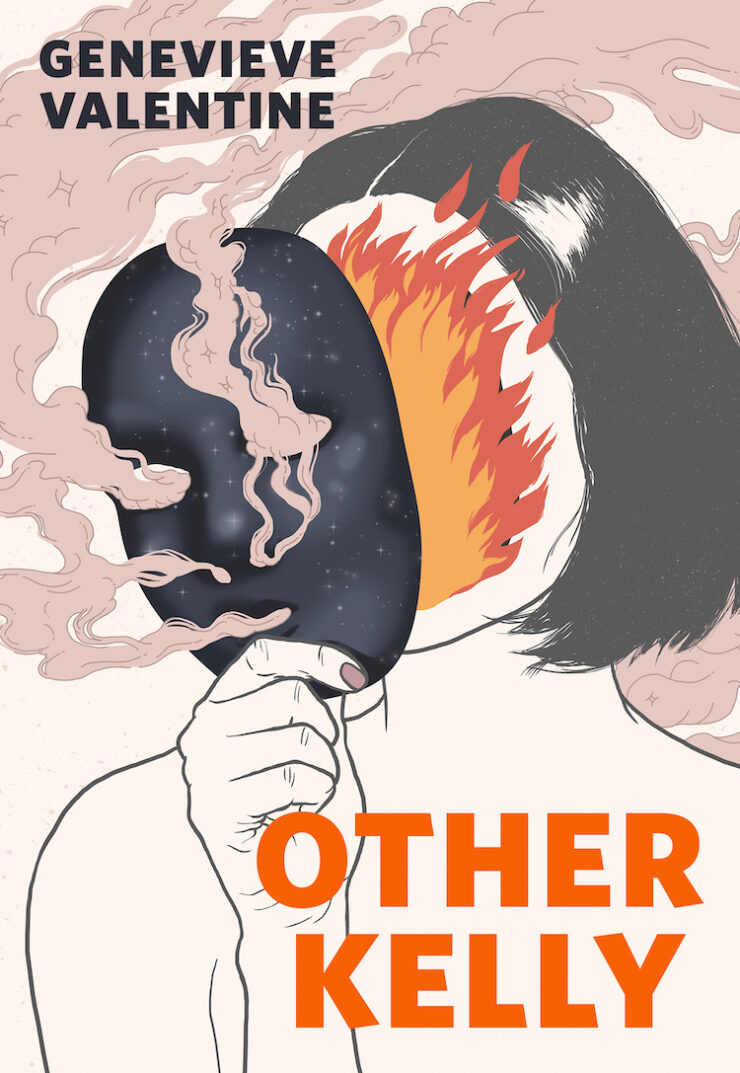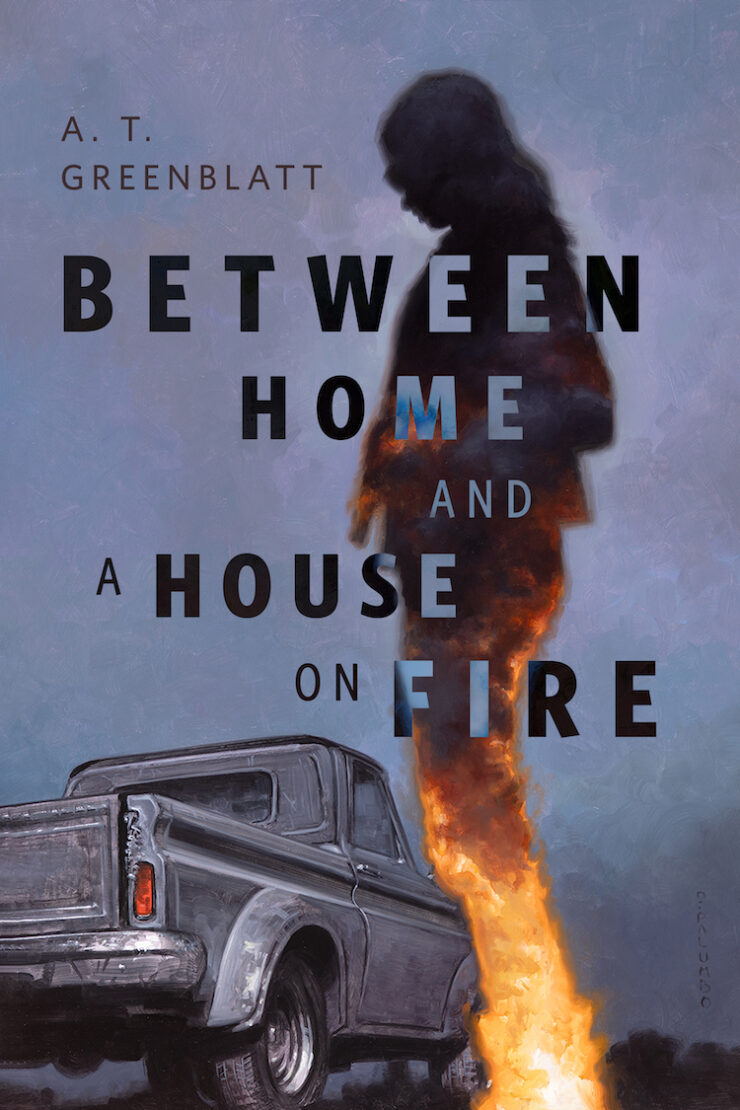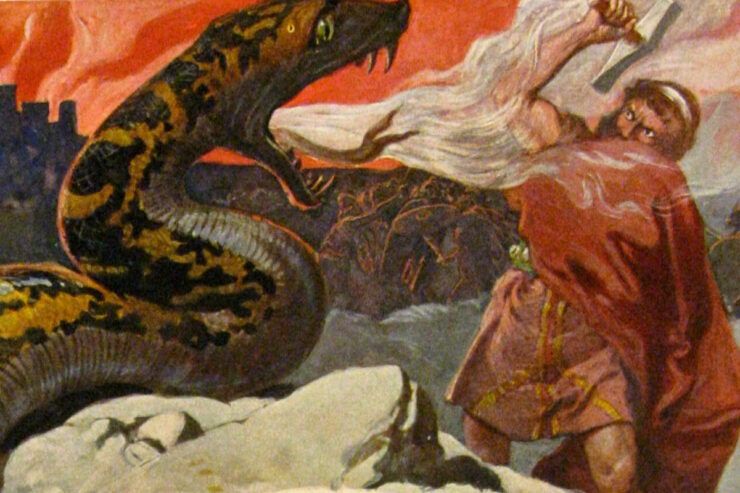The warriors of northern myth, epic, and saga have always been famed for their fighting prowess; the glory of their victories was praised loud and proud under the rafters of the mead halls where they were transformed into legend long ago. Whether divine or mortal, the tales of these fighters’ fierce engagements in hand-to-hand combat and adventurous, monster-slaying exploits have entertained generations of listeners, readers, and viewers over the course of centuries as technology has evolved from olden times to the present day
While many exciting, original characters inspired by the Viking Age and its culture continue to appear on page and screen, the warriors who spring from the misty depths of actual lore somehow remain the most vital across all forms of art and entertainment. These figures often form an integral component of the worldbuilding of many modern-day fiction stories, whether full-blown fantasy or historical fiction set in a Viking or Viking-esque milieu. In some cases, these figures become prominent characters of entirely new plot-lines. In other cases, their exploits form the core of modern retellings of the ancient stories themselves. While the overall traits and historicity of these warriors may vary, one thing remains certain: their fierce reputations have survived for over a millennium for good reason.
Thor
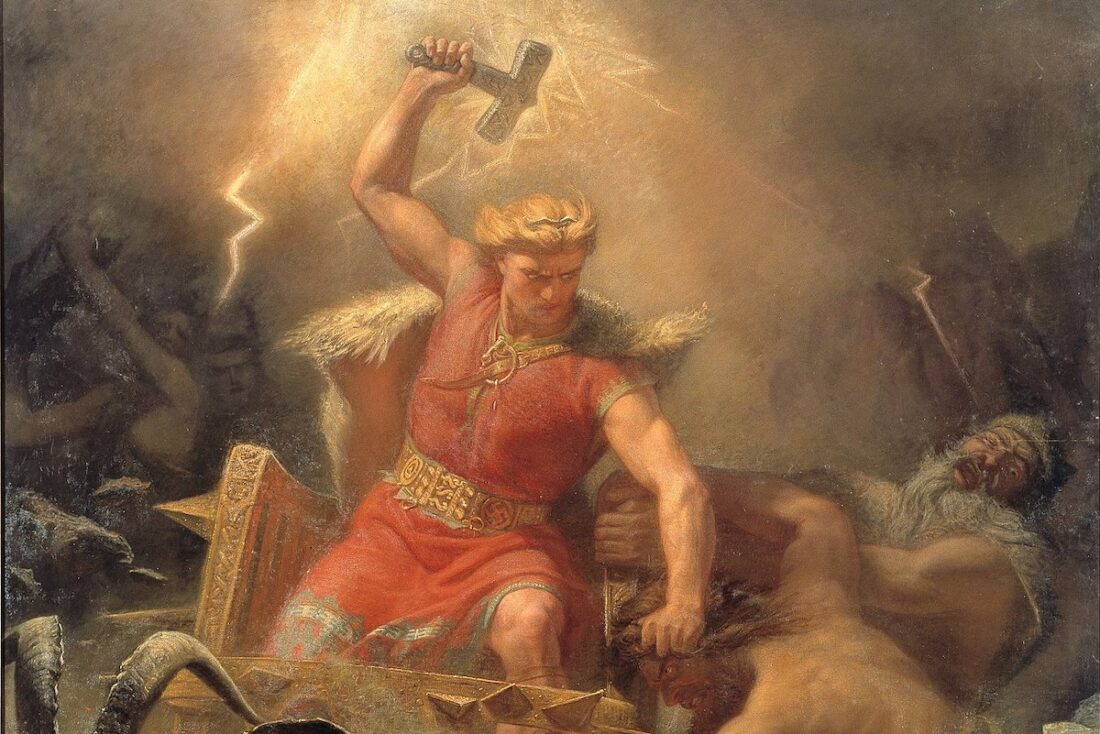
No discussion about legendary northern fighters should begin with anyone other than Thor. The renowned thunder god of Norse mythology, Thor was widely worshiped in the Viking Age and even before that (and figures prominently in the modern-day revival faith known as Ásatrú) and has given his name to the day of the week we call Thursday. Boisterous and quick-tempered, Thor tended to be more popular than his grim, one-eyed father, Odin, among the general population of the Viking Age, as various place-names and recovered artifacts found throughout the Nordic countries suggest (such as the famous Icelandic statuette of Thor holding his hammer that was discovered in Eyjafjörður, dated to the year 1000). But more numerous than the direct depictions of the god himself are the artifacts that have been found in archaeological digs that specifically represent Mjölnir, his famous hammer and primary weapon.
Thor remains renowned for his strength and excellent fighting abilities, and the ancient tales of his slaying of hostile giants have survived in the Icelandic Eddas, our foremost sources of Norse mythology. The old tales also tell of his deadly rivalry with Jörmungandr, the Midgard (or Middle-Earth, if you will) Serpent who Thor once lured up from the bottom of the sea during a disastrous fishing trip. The two are fated to kill each other when the world ends at Ragnarök.
Thor often features in the background of historic fiction and Norse-inspired fantasy stories. Even if he does not play a role himself, characters often reference his humorous antics or call upon him for help and strength in novels such as Giles Kristian’s Raven series. Or they might encounter his presence in dreams or feel the effects of his off-stage actions, as in Gregory Amato’s Burden to Bear and Bjørn Larssen’s Children. As retellings of the myths themselves, Neil Gaiman’s Norse Mythology and Joanne M. Harris’ The Gospel of Loki naturally feature Thor as a prominent character. The stories of his exploits have also found their way into music, particularly in the subgenre of viking metal as exemplified by the band Amon Amarth, and in video games such as God of War: Ragnarök.
But, of course, the most well-known version of Thor at this point in time is his incarnation as a superhero in the Marvel Universe. Created as a comic character by Stan Lee and Jack Kirby in the early 1960s, this version of Thor generally stays true to his basic qualities as depicted in the old sources—in the sense that he’s a great fighter, strong, short-tempered, loves to drink, and doesn’t always do a lot of thinking—while completely reinventing the world that he inhabits. His appearance also undergoes a radical change; the Thor of the Eddas is red-haired and bushy-bearded. Marvel’s version seems to borrow the appearance depicted in Mårten Eskil Winge’s famous 1872 painting, Thor’s Fight With the Giants. At any rate, the blond, body-builder version of Thor is now most common… and even makes makes a very memorable appearance of sorts in the classic 1987 comedy film, Adventures in Babysitting.
Beowulf
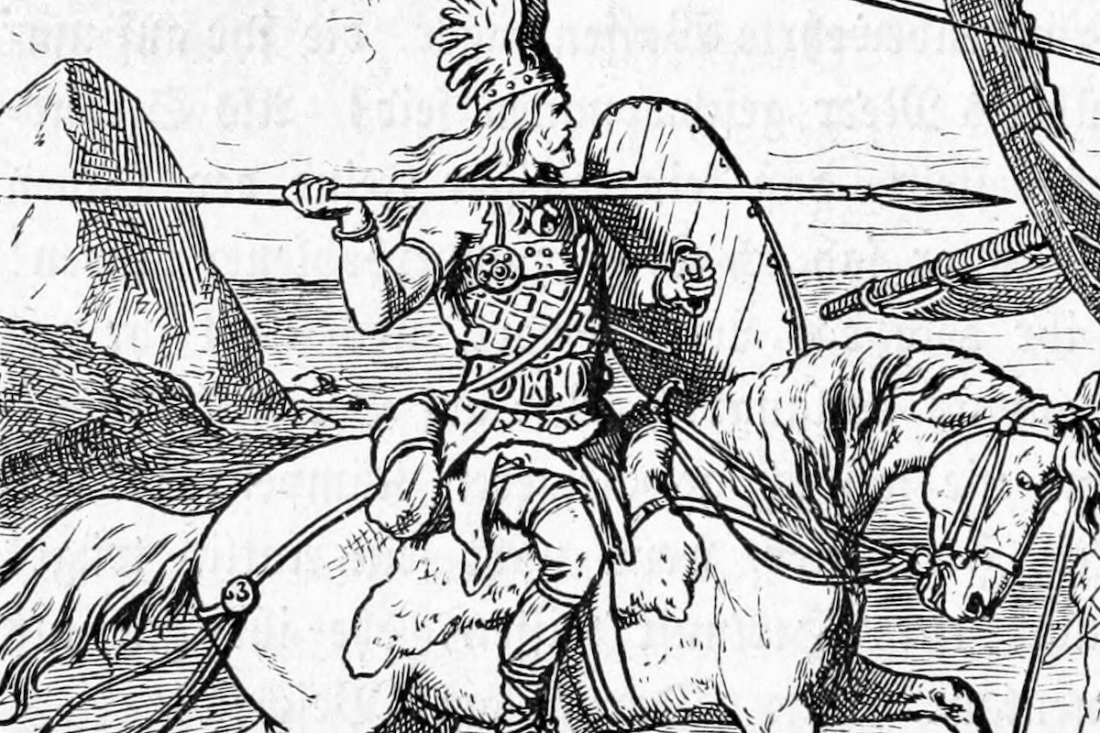
Perhaps the most famous human fighting machine in all the English language, Beowulf is, of course, Swedish. Or more accurately, he is a Geat (a member of a Germanic tribe that ruled over a territory that was eventually absorbed into Sweden). Beowulf’s story takes place prior to the Viking Age and survives in an Old English manuscript dating to around the year 1000 C.E. Many students are required to read some version of his tale in secondary school, a fact that likely diminishes its potential for garnering new interest among young people. At any rate, it’s a classic, albeit somewhat simple, story: Beowulf kills monsters, then dies himself. But even though he dies in the end, we are reminded again and again just how good he is at fighting and killing monsters (he is also very good at leading men in war and swimming long distances).
Beowulf also has a likely twin in the figure of Bodvar Bjarki, who appears in the Icelandic Hrolf Kraki’s Saga and the Danish History of the Danes (usually referred to simply as Gesta Danorum). Scholars such as Jesse L. Byock suspect that Bodvar and Beowulf probably stem from the same ancient legend. The two share similar traits and names, which relate to “bear” (the animal). Additionally, Bodvar, like Beowulf, kills a monster that terrorizes a mead-hall. But Bodvar, unlike Beowulf, also possesses the supernatural ability to send his spirit out as a ferocious bear in battle. Additionally, unlike Beowulf, who is a leader in his own right, Bodvar acts instead as a member of the retinue of warriors that serves King Hrolf Kraki. That whole tale is retold in modern prose by the revered sci-fi and fantasy author Poul Anderson in a novel that shares the same name as the Icelandic saga.
Beowulf (the poem) has been a perennial favorite for generations of translators, with examples ranging from J.R.R. Tolkien (published in 2014 but composed in the 1920s) to the Irish poet and Nobel laureate Seamus Heaney (2001), to Maria Dahvana Headley (2020) to Tom Shippey (2024), but the story also finds its way into a wide variety of retellings, each with its own unique perspective. Parke Godwin’s The Tower of Beowulf (1995) provides a fun, fairly straight-forward novelization, while Maria Dahvana Headley’s The Mere Wife (2018) offers a modern-day, feminist twist on the old tale. Michael Crichton’s Eaters of the Dead (1976), which was the basis for the 1999 film The 13th Warrior, is a retelling that moves the tale into the Viking Age and eliminates the full-blown fantasy elements, positing the monsters as a left-over enclave of Neanderthals instead.
There has been no shortage of Beowulf-related screen adaptations, many of which have been very poorly produced, but two films beyond The 13th Warrior that have retold the Beowulf legend better than most are Beowulf and Grendel (2005), which was filmed in Iceland and starred Gerard Butler and Stellan Skarsgård, and Beowulf (2007), the performance-capture animated film based on a script co-written by Neil Gaiman. And just recently, the Jim Henson Company announced a new live-action film to start production later this year based on Grendel, the 1971 novel by John Gardner that retells the old story from the perspective of its most notorious monster.
Sigurd & Brynhild
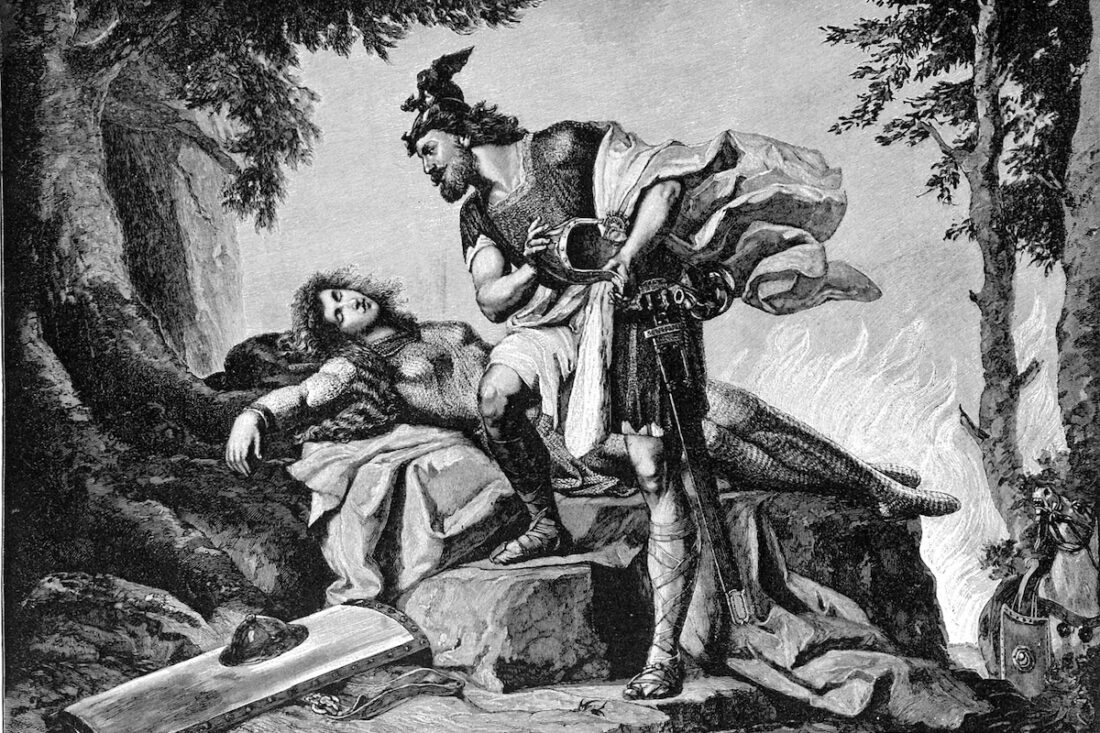
Sigurd and Brynhild are two of the most renowned figures in all of Norse lore. But unlike the other figures on this list, Sigurd and Brynhild do not call Scandinavia home (or Asgard either, for that matter, as is the case for Thor), but rather the Germanic-speaking regions of mainland Europe long before the advent of the Vikings. Their story is remembered in many old sources, with the German Nibelungenlied and the Icelandic The Saga of the Volsungs and The Poetic Edda being the foremost.
Sigurd (also known as Siegfried) stems from the clan of the Volsungs—a line of top-notch warriors enduring a serious string of bad luck despite (or perhaps because of) being favored by Odin himself. Like Beowulf, Sigurd is famed for slaying a dragon. Brynhild (also known as Brunhild), on the other hand, is a valkyrie—one of Odin’s famed “choosers of the slain.” The implication is that she is also fearless and adept at the use of weapons, but we know less about her battle history. In fact, the part of the tale that focuses on Sigurd and Brynhild (it’s a multi-generational story) deals mostly with their status as star-crossed lovers, and a very important ring plays an extremely critical role in the whole tragic sequence of events.
This is the story that served as the primary influence for Richard Wagner’s great epic, Der Ring des Nibelungen, in the late 19th century. The ring motif also influenced J.R.R. Tolkien’s famous body of work about Middle-earth (and he retold part of the tale itself in The Legend of Sigurd and Gudrún, released for the first time in 2009; Gudrún was other woman involved in the disastrous love triangle). William Morris also crafted his own version of the story in 1876 and numerous examples of artwork from the 19th and early 20th centuries depict the characters, including illustrations by Arthur Rackham (who focused on Wagner’s version) and Jenny Nyström (who is best-known for creating the iconic look of Christmas gnomes as we know them today). But the story was clearly very well known long, long before any of those creators began to borrow from it. Artistic depictions of the legend have been found on a handful of runestones in Sweden and stone crosses in the United Kingdom, and the scene of Sigurd’s dragon-slaying appears in ornate, carved wooden relief at the medieval stave church in Hylestad, Norway.
More recently, the legend has been retold in a handful of fantasy novels. Stephan Grundy’s Rhinegold and Diana L. Paxon’s Wodan’s Children trilogy both tackled the subject in the 1990s. And with the recent rise of interest in the “whole northern thing,” it’s perhaps not too surprising that two new retellings have just been released in the past year: Kate Heartfield’s The Valkyrie and Tim Hodkinson’s Sword of the War God.
Ragnar Lodbrok & Lagertha
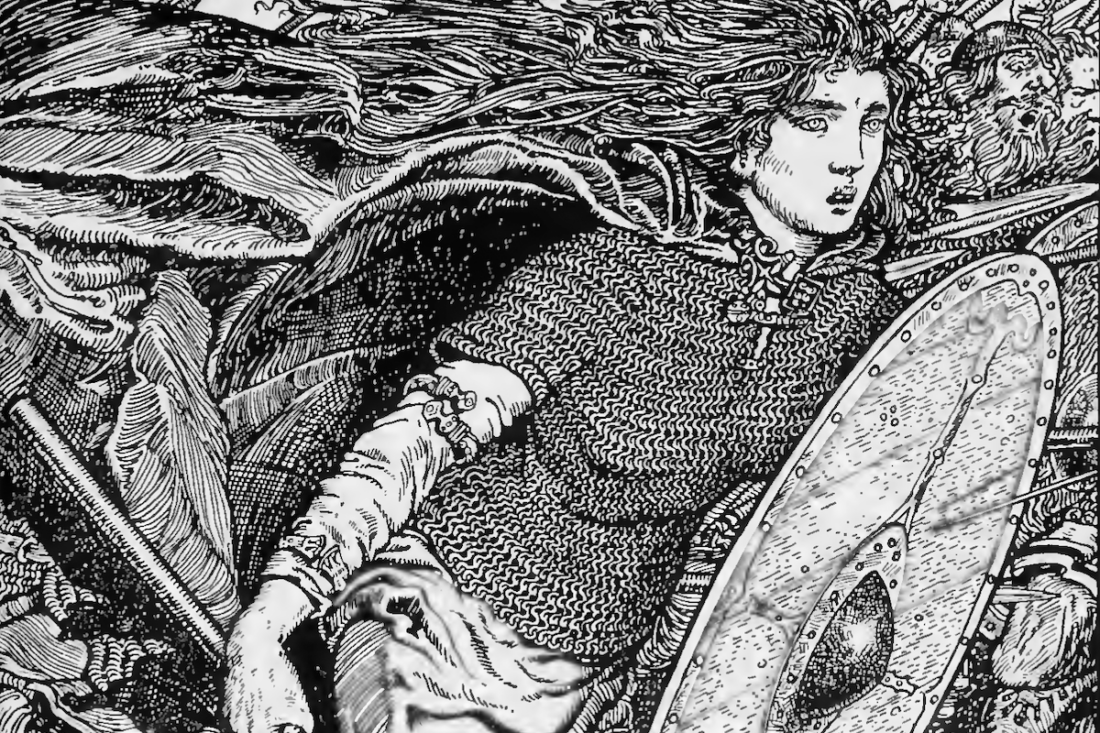
Ragnar Lodbrok has experienced a major resurgence in popularity recently thanks to the History Channel’s Vikings, which is basically a fantasy show masquerading as historic fiction (the rampant and egregious historical inaccuracies could easily form the basis of an entire book of its own; they go far beyond the normal limits of creative license for historic fiction). Nonetheless, Ragnar receives a good deal of attention in a variety of the old sources, where he is generally identified as the legendary son of the also legendary King Sigurd Ring and father to the not-so-surprisingly named “sons of Ragnar” who include memorable individuals that should be familiar to fans of the television series, such as Björn Ironside, Ivar the Boneless, and Sigurd Snake-in-the-Eye, among others (the sources are inconsistent).
According to the Icelandic Saga of Ragnar Lodbrok and Tale of Ragnar’s Sons, Ragnar marries Aslaug (who he actually meets via the riddle-esque scene as depicted in the History Channel’s show, and who might also just be the daughter of Sigurd and Brynhild); Aslaug becomes mother to Ragnar’s famous sons mentioned above. But according to Gesta Danorum, he married the shield-maiden Lagertha, who we also know from the show, where she assumed a much more prominent role. But Gesta Danorum assures us that Lagertha conducted matchless feats of bravery in battle, even if we don’t really know what those were aside from one instance when she helps Ragnar regain his throne.
Ragnar engages in more typical Viking behavior than the other warriors on this list—meaning he raided and explored—but he’s nonetheless a very impressive fighter, too. In fact, like Beowulf and Sigurd, he’s a serpent slayer. After divorcing Lagertha, Ragnar seeks out the maiden Thora’s hand in marriage. To succeed, he must slay the serpent (or serpents, again depending on the source) that guards her bower. When facing this monstrosity, he wore a special pair of shaggy breeches, which is what the “lodbrok” part of his name refers to. Ragnar lived a tumultuous life full of extensive military campaigns, which eventually led him to England where he died a true Viking warrior’s death—laughing at his enemies from the depths of the snake pit into which he had been thrown.
While famous and legendary, Ragnar hasn’t received the same degree of attention in pop culture—at least prior to his on-screen rebirth as the star of Vikings, portrayed by actor Travis Fimmel—as some of the others on this list, and the same definitely also goes for Lagertha (portrayed by Katheryn Winnick). Nonetheless, Ragnar receives passing mention in Frans G. Bengtsson’s The Long Ships, the classic adventure novel from 1941, and made an appearance in the 1958 film The Vikings. He also features in the 1993 alternate history novel The Hammer and the Cross, coauthored by Harry Harrison and Tom Shippey, whose books include J.R.R. Tolkien: Author of the Century (2000), Laughing Shall I Die: Lives and Deaths of the Great Vikings (2018), and the aforementioned translation of Beowulf. More recently, Einar Selvik, the mastermind behind the heavily Norse-influenced musical act Wardruna, released an album inspired directly by Ragnar Lodbrok’s notorious death scene: Snake Pit Poetry.
Grettir Asmundson
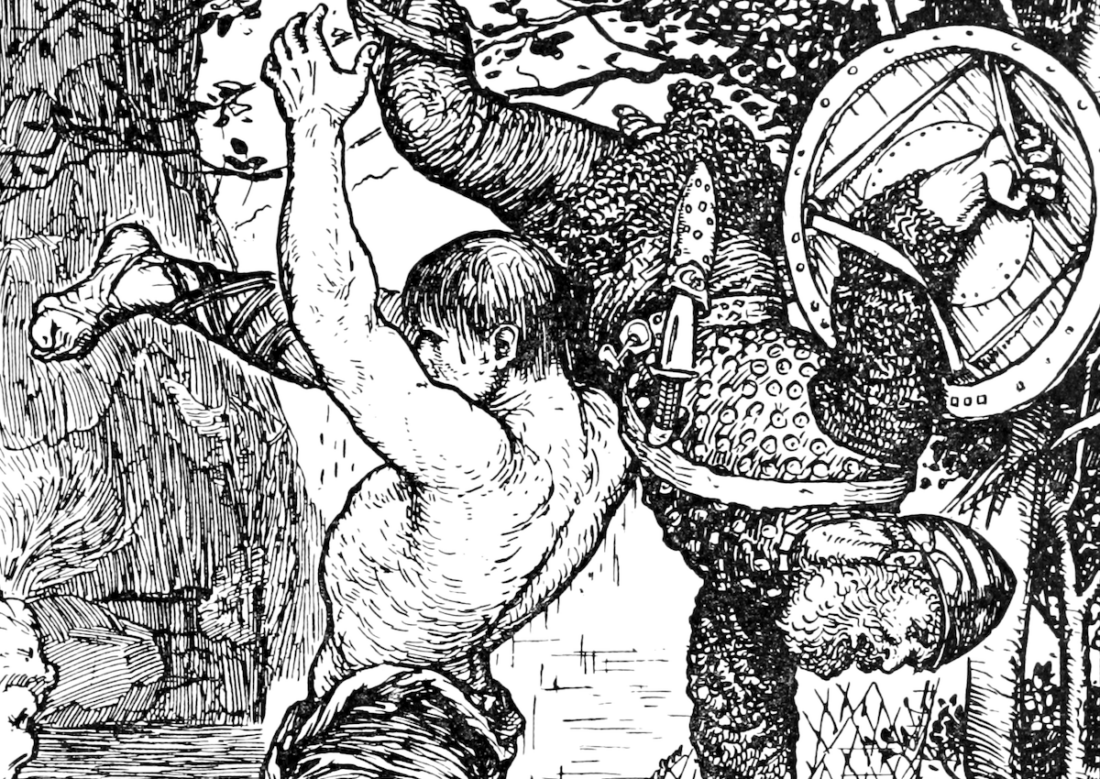
While less world-renowned than the others on this list, Grettir Asmundson is no less a fearsome fighter: he’s capable of defeating zombies with his bare hands (or “draugar” as they are known in the old sources; which is a term more literally related to the word “ghost,” but which act more akin to our modern concept of zombies). He’s an unruly child in his early years, but earns himself a reputation throughout Iceland and to a lesser extent Norway as a formidable warrior capable of killing berserkers. He’s also more of an anti-hero than many of the fearless fighters who serve to exemplify the ideal of the old warrior culture; after being cursed in its dying breath by Glam, one of the draugar that he kills, Grettir’s luck turns against him. He becomes plagued by a constant fear of the dark and a series of mishaps and misdeeds that eventually earn him a sentence of outlawry.
His story is told in Grettir’s Saga (sometimes also called The Saga of Grettir the Strong), and while it hasn’t made quite the same degree of impact on pop culture or modern fantasy as the others described here have, there have been a few notable instances of it reaching a wider audience. In the mid-20th century, Icelandic artist Halldór Pétursson created a series of highly stylized black and white drawings of key scenes in the saga. More recently, Grettir’s Saga has been transposed to modern Sheffield, England and retold in the novel Nutcase (2017) by Tony Williams. And most recently, the scene in the 2022 film The Northman in which the main character, Amleth, defeats the mound-dweller borrows extensively from Grettir’s battle with Glam, including the decapitation and subsequent placement of the draugr’s severed head against its own buttocks. Clearly, draugar are not to be respected when they are defeated in battle.


